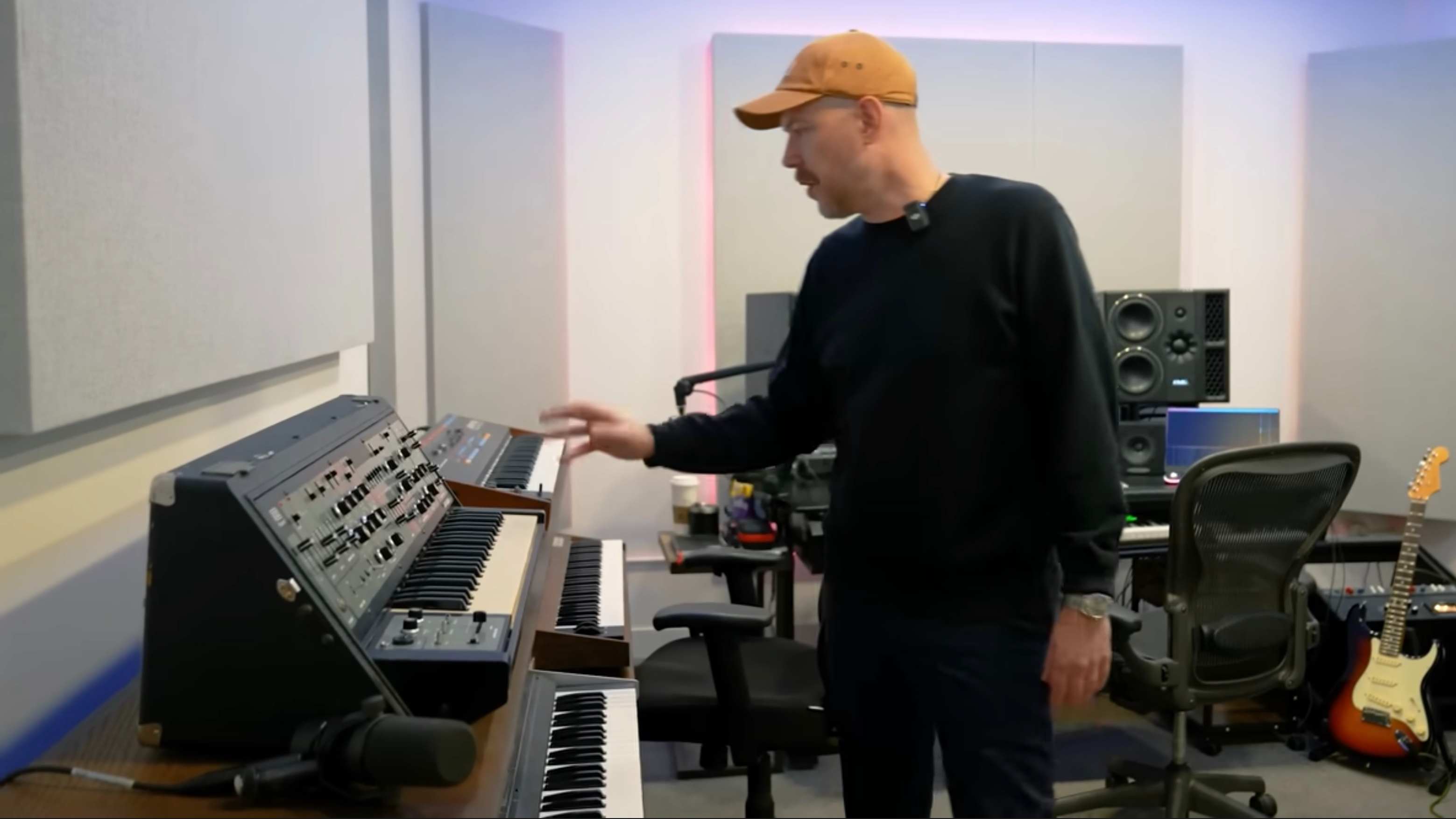How to use a low-pass filter
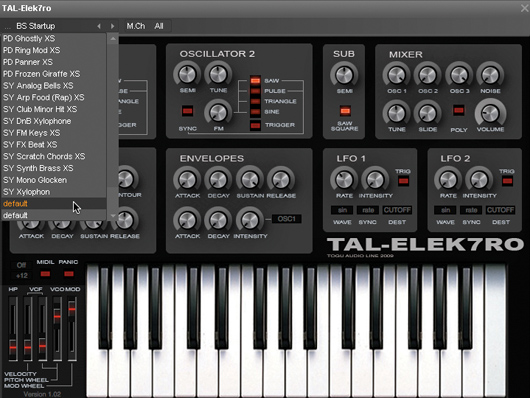
Getting started
Step 1: Since the low-pass filter is by far the most common sort of filter you’ll encounter, that’s what we’ll start with. Let’s turn to TAL-Elek7ro, a free simple virtual analogue with a fairly standard set of filter parameters. Fire it up in your host of choice and select the Default patch from your host’s patch browser.
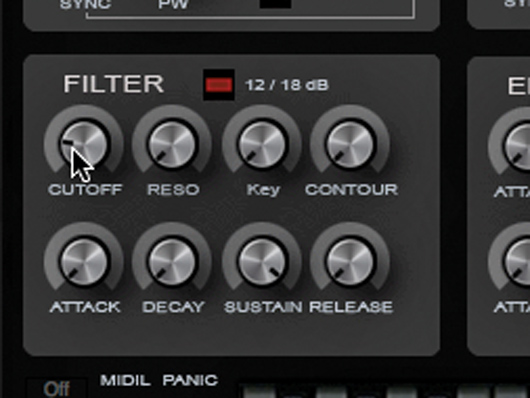
Cutoff
Step 2: Have a play with the patch. It’s not too exciting, consisting of a single sawtooth waveform. Still, that’s enough for our filter to sink its teeth into. Locate the Filter section. Now, play a series of notes from your MIDI controller or sequencer program. While doing so, sweep the Cutoff knob counter-clockwise. Note how the frequencies are filtered as the Cutoff is reduced.
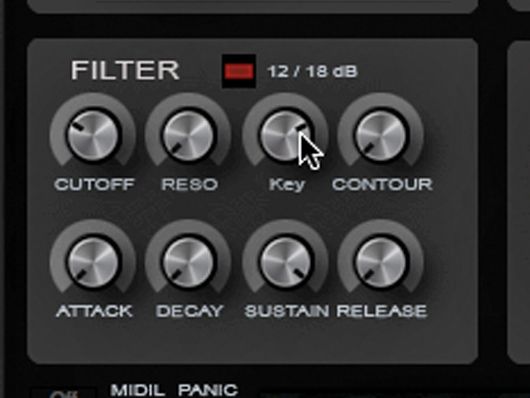
Keyboard scaling
Step 3: Set your Cutoff knob to around the 10 o’clock position. Now, play a series of notes starting from the bottom of your keyboard and ascending to the top. Like a lot of instruments, TAL-Elek7ro’s filter has a keyboard scaling function. Turn the Key knob up to about 2 o’clock and repeat the above. Notice that the upper notes have less filtering. This is useful for recreating the behaviour of acoustic instruments.
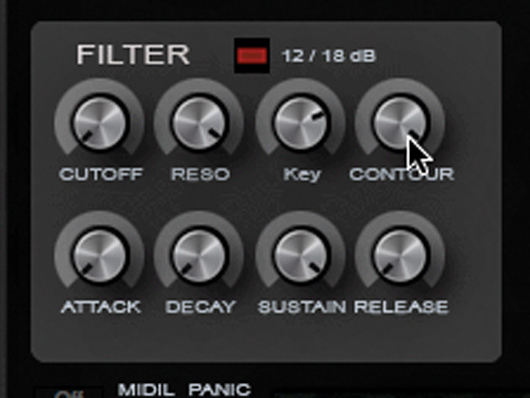
Resonance and envelope
Step 4: Sweep the Resonance knob while playing. That’s very dramatic! Leave it cranked up to full. Let’s take a quick look at the filter’s envelope function. Leave the Key scaling knob where it is. Turn the Cutoff parameter all the way down. Next, turn the filter’s Contour knob all the way up. Contour was the old Moog name for an envelope function.
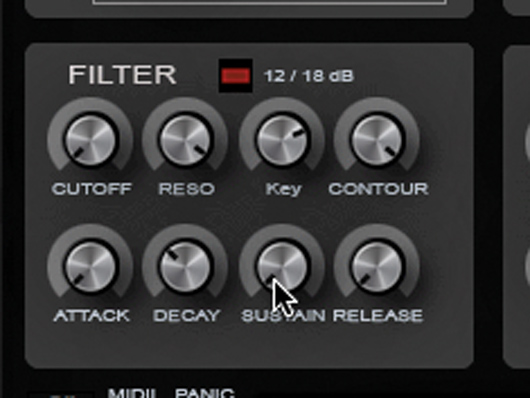
Envelope tweaking
Step 5: Play some notes from your keyboard. Hmm. That doesn’t sound quite right. What happened to our sound? Well, the envelope is still at its default setting. The envelope controls are in the bottom half of the Filter section. Let’s make a few changes. Set the Decay to about 10 o’clock, and turn the Sustain all the way down. Now play a note or two. Much better. That’s a very familiar sound!
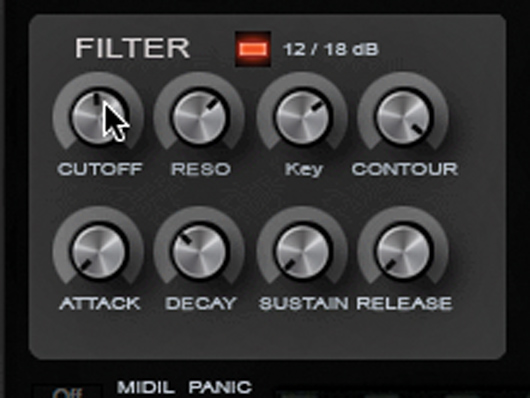
Slopes
Step 6: Finally, let’s try experimenting with the filter response slopes. This particular synth has a switch that toggles between an Oberheim-style 12dB filter and a TB-303-style 18dB filter. Flip the switch while trying different cutoff, resonance and envelope settings to see if you can hear the difference. It’s subtle, but you’ll pick it out. ...





